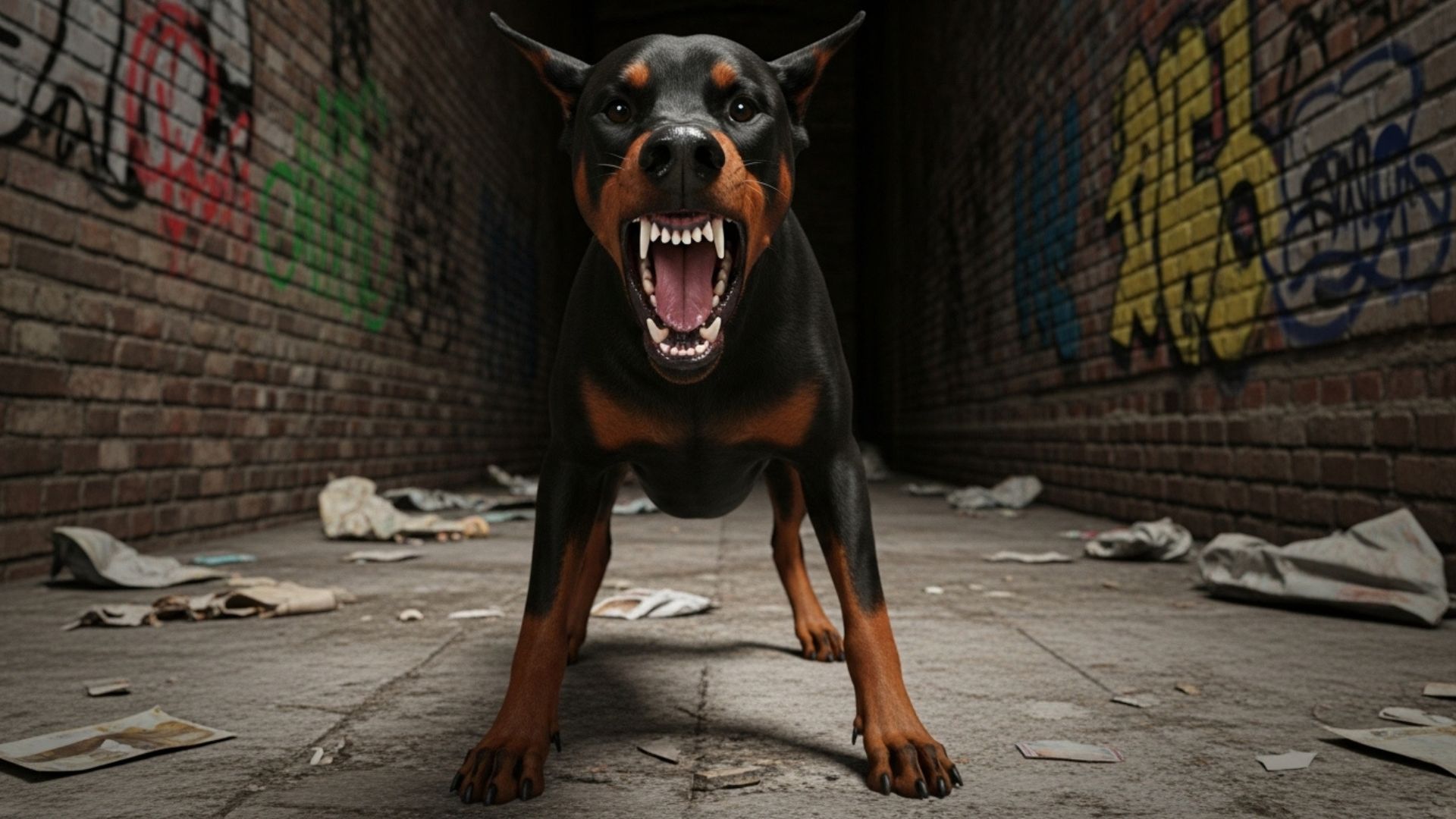Have you ever wondered why some dogs are known for having a “bad attitude”?
Maybe you’ve seen a neighbour’s pup growl at strangers, or heard stories about aggressive dogs that seem impossible to handle. The truth is, no dog is born bad. Every breed carries a story — one shaped by its history, purpose, and the hands of the dog owners who raise them.
Long ago, many of today’s infamous dog breeds with bad attitudes were originally bred for protection, hunting, or guarding animals. Over time, that courage and strength sometimes turned into stubbornness or aggression when not guided the right way. Yet behind every so-called “dangerous” dog lies a loyal heart waiting for patience and understanding.
According to the American Veterinary Medical Association, about 4.5 million people are bitten by dogs each year, reminding us that even our best friends can act out when fearful or poorly trained.
In this article, we’ll look at several notorious dog breeds that earned their fierce reputations—not to shame them, but to understand them. Because with the right care and training, even the toughest canine can learn to love, listen, and live peacefully beside us.
Infamous Dog Breeds With Bad Attitudes
Here we go, one by one.
1. Dachshund
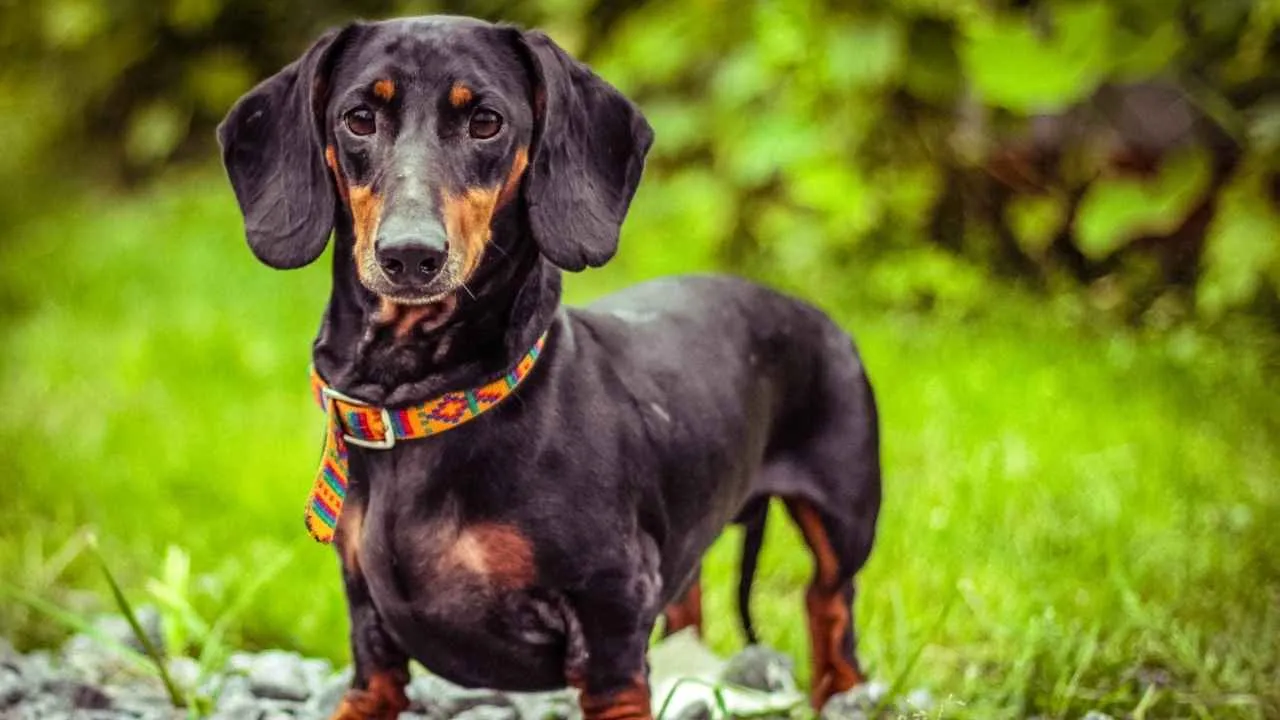
Ever met a dog that’s convinced it’s ten times bigger than it really is?
That’s the Dachshund for you — tiny legs, long body, and a personality that could challenge a lion.
These little warriors were originally bred in Germany to hunt small animals like badgers and rabbits. That hunting instinct still runs deep, which explains why this small-sized breed can sometimes show aggressive behavior or snap with a playful bite when excited.
Despite their reputation as notorious dog breeds, Dachshunds are also fiercely loyal and protective of their family, especially when they sense danger. Still, their boldness can easily turn into stubborn behavior if training isn’t consistent.
Many dog owners find them charming but challenging — they love attention yet hate being told what to do. According to the American Kennel Club (AKC), their intelligence makes them clever problem-solvers, but also a bit too independent for their own good.
With early training, socialization, and patience, even this little rebel can become a well-mannered companion.
Fun Fact:
The name Dachshund literally means “badger dog” in German — a reminder that this brave little canine once took on underground hunters twice its size!
2. Beagle
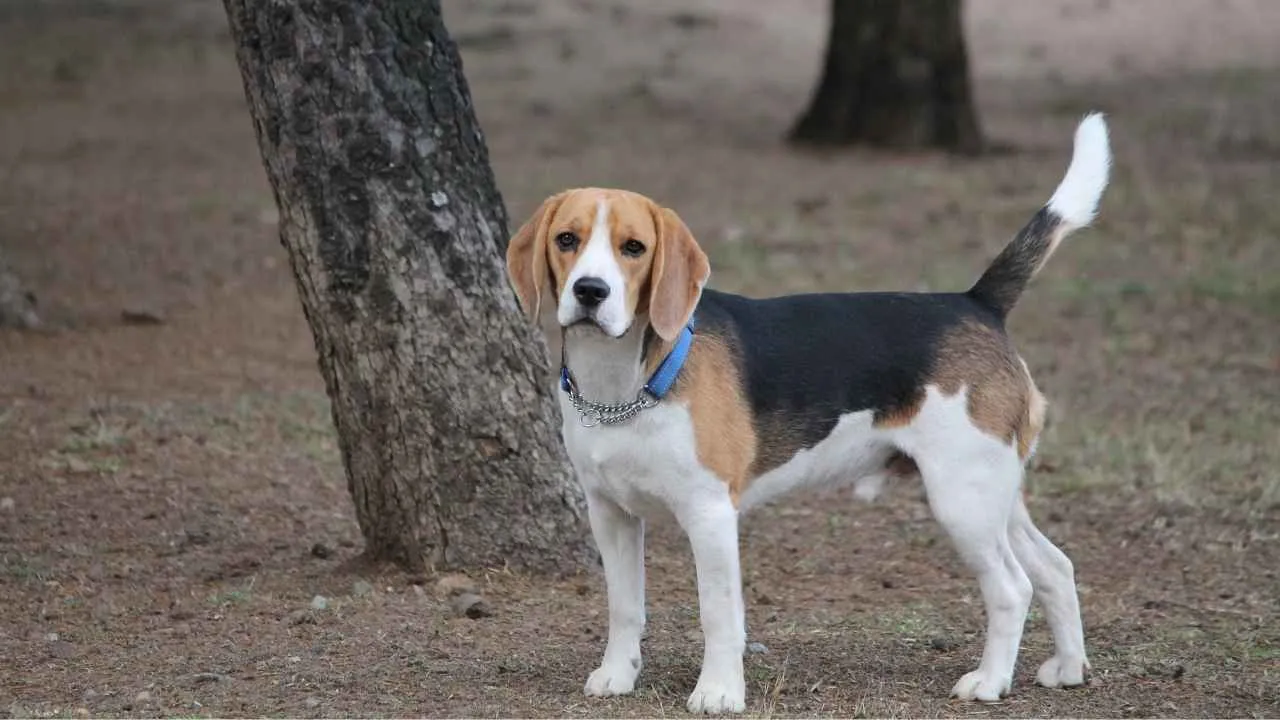
Have you ever heard a dog howl at nothing — and then realize it was just chasing a mystery scent?
That’s the Beagle for you.
Beagles are charming and friendly, but they come with a wild side. Their loud barking, howling, and relentless sniffing spring from a powerful prey drive.
Because they were originally bred for hunting small game, their noses are always on patrol. Owners need to channel their Beagle’s curiosity and energy into games and structured walks.
At times, they ignore commands when distracted, especially during walks or sniffing games. And if left alone too long, they might dig, chew, or act out just out of anxiety. That said, Beagles are deeply loyal and great with families.
They are gentle with small children and get along well with other pets when socialized early. Their energy and curiosity make them fun companions — but only for owners who can match their pace, patience, and consistent training.
Fun Fact:
Beagles can “speak” in three ways — bark, bay (a melodious howl), and howl — thanks to their rich hunting heritage.
3. Yorkshire Terrier
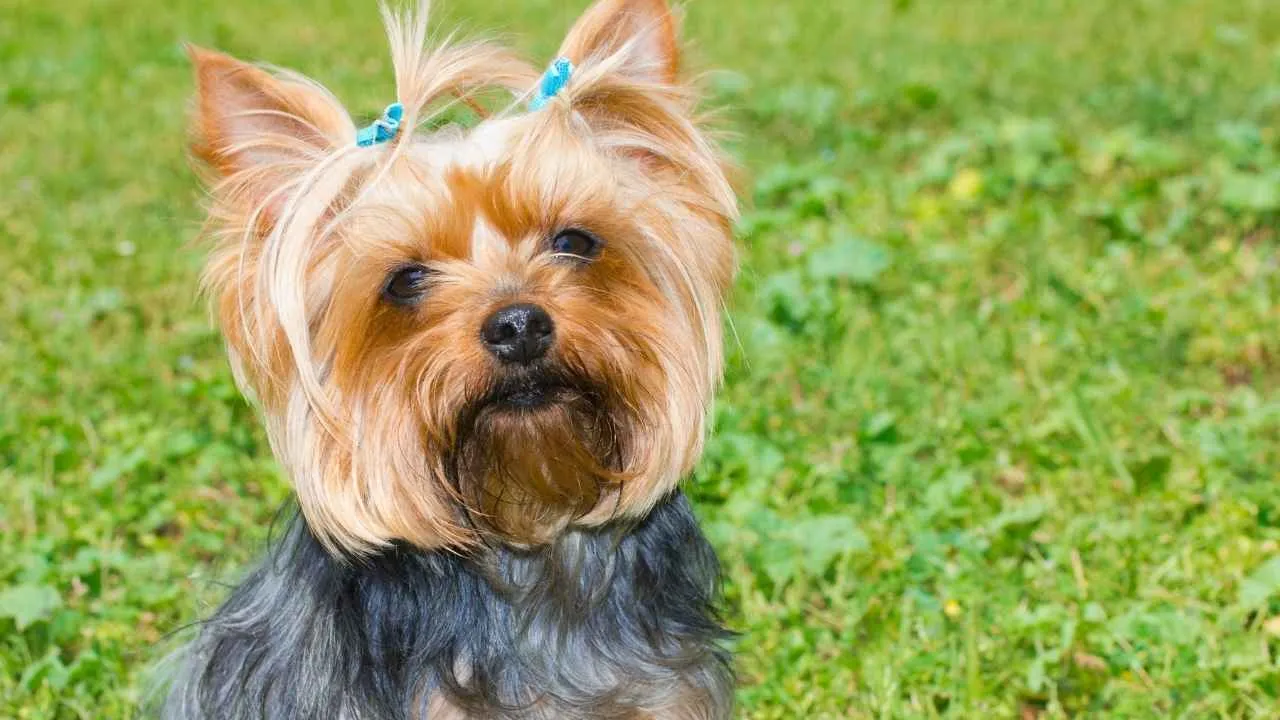
Who knew a dog that fits in a handbag could rule the house like a boss?
The Yorkshire Terrier may be small, but its confidence can fill an entire room!
This spirited breed was originally bred in England to hunt rats in textile mills — proof that even the tiniest canines can have incredible strength and courage. Their sharp instincts gave them a strong prey drive, which sometimes shows as aggressive barking or snapping at strangers or other pets.
Despite their small size, they think they’re guard dogs ready to protect their owners from anything that moves. At home, these dogs are both independent and affectionate.
Their stubborn nature means they love doing things their own way, so patience and gentle training are key. Yorkies can develop negative behaviors if spoiled or not socialized early, but they remain one of the most loyal and loving small companions when guided with care.
Fun Fact:
The first Yorkies were much larger than today’s toy-sized versions — breeders gradually made them smaller to fit perfectly into Victorian ladies’ laps!
4. Afghan Hound
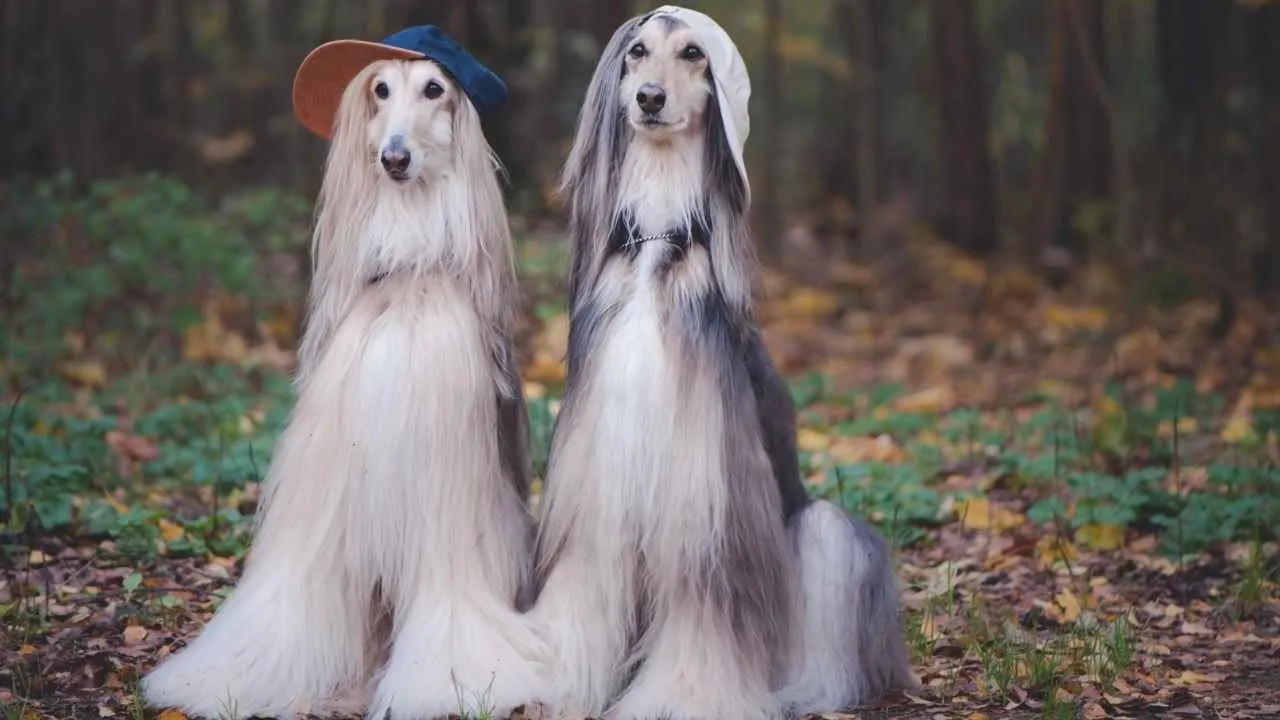
Ever seen a dog that looks like royalty but acts like it, too?
The Afghan Hound is the glamorous diva of the dog world—graceful, mysterious, and sometimes too proud to listen.
Known for their flowing coats and calm gaze, these elegant canines were initially bred in the rugged mountains of Afghanistan to chase down swift prey.
Their incredible speed, strength, and independence make them perfect for hunting, but these same traits can also make them a bit stubborn at home.
They often tend to ignore commands, not because they don’t understand—but because they simply choose not to. That independent streak makes them fascinating yet challenging for new owners. Afghan Hounds require gentle training and positive reinforcement.
They don’t respond well to harsh methods, preferring calm guidance and trust. For dog owners who value elegance, patience, and a touch of mystery, this breed is a loyal yet delightfully unpredictable companion.
Fun Fact:
As shared by Wikipedia, the Afghan Hound is one of the oldest known dog breeds, with roots tracing back thousands of years—proving that true beauty (and attitude) never goes out of style.
5. Rottweiler
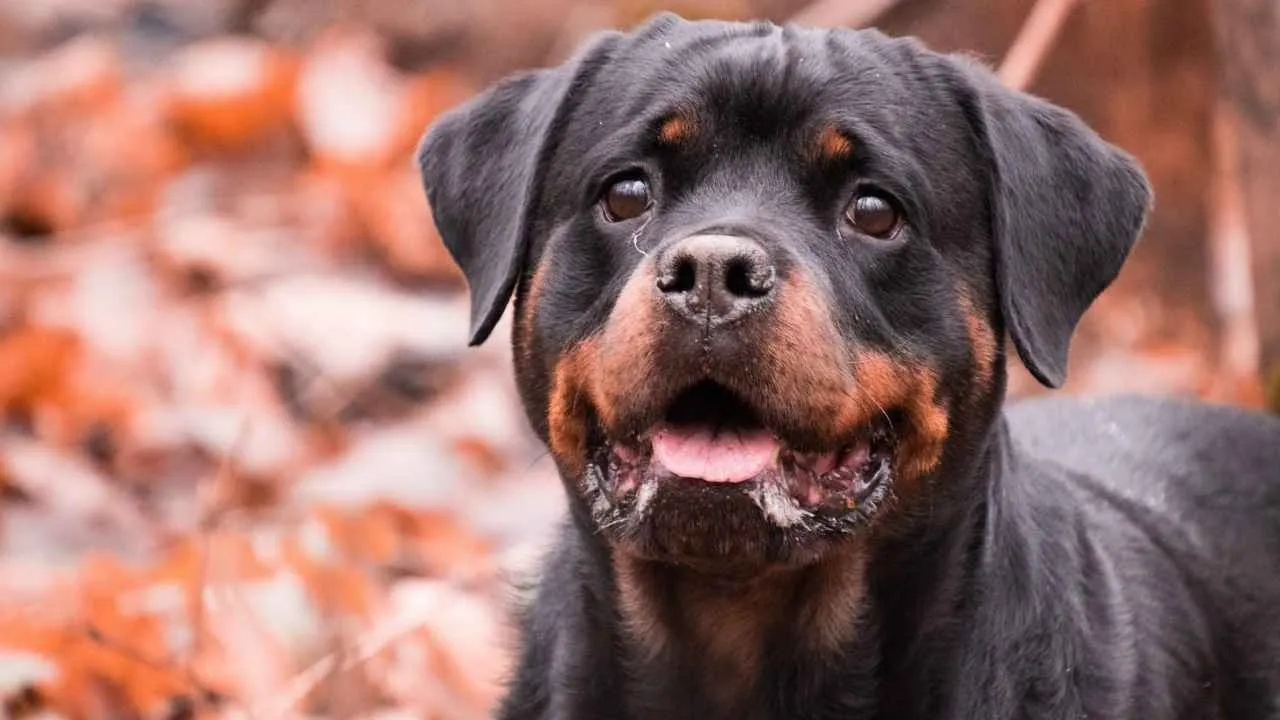
Think you can handle a dog with the heart of a lion and the loyalty of a knight?
Meet the Rottweiler — strong, brave, and fiercely devoted.
The Rottweiler is a powerful breed that originated in Germany, where it was first used for guarding cattle and pulling meat carts. This deep-rooted purpose helped shape their natural strength and loyal temperament.
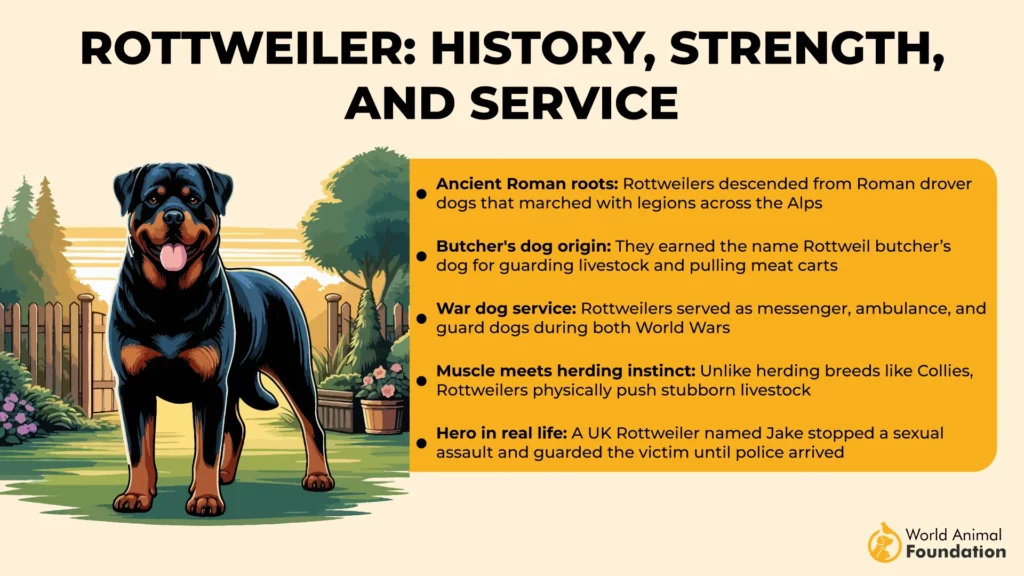
However, when a Rottweiler lacks early training, its protective instincts can turn aggressive, especially toward strangers who enter its space. They also naturally watch their surroundings closely, alerting their owners to any unusual activity. These dogs are often misunderstood rather than truly dangerous.
Many behavioral issues arise from neglect or poor socialization, not from their natural personality. Responsible owners who provide clear boundaries and consistent commands usually find their Rottweilers to be calm, confident, and deeply attached to family.
This breed sometimes faces breed-specific legislation, even though its behavior largely depends on environment and training, not genetics.
Fun Fact:
Rottweilers were once known as “butcher’s dogs” because they helped herd cattle and pull carts full of meat through the streets of medieval Germany!
6. Siberian Husky
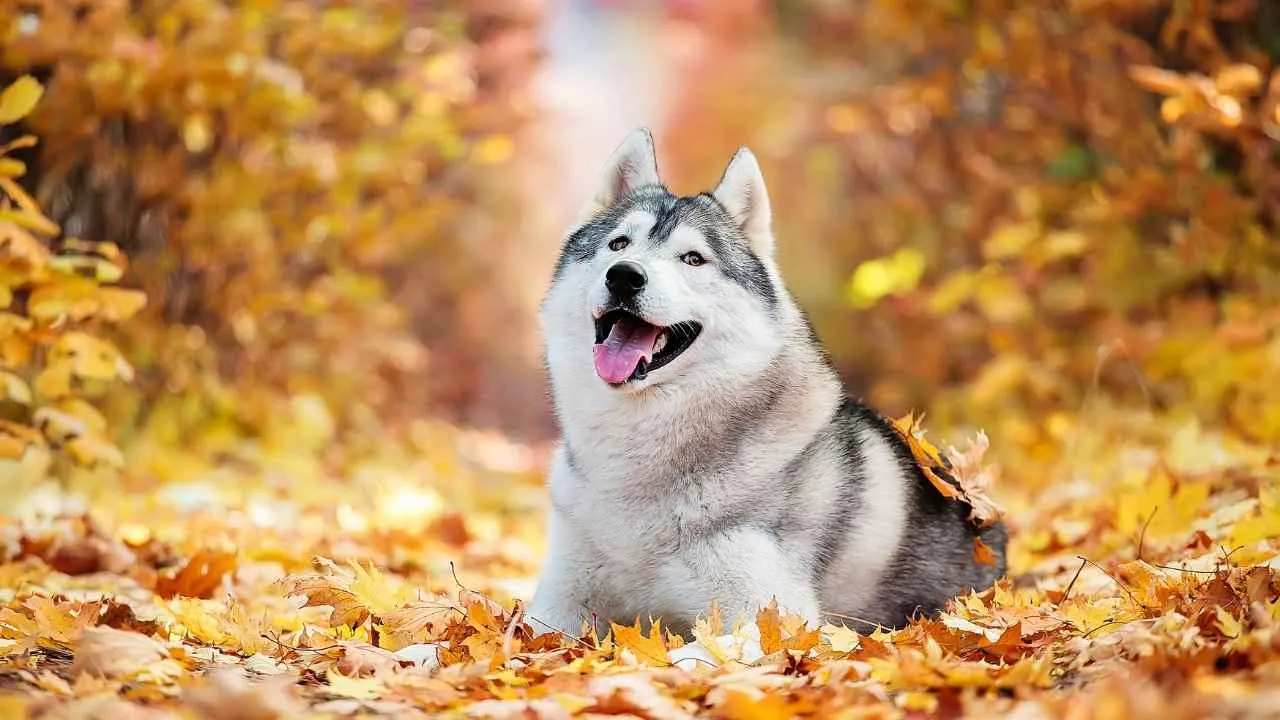
Ever seen a dog that looks like it walked straight out of the Arctic?
The Siberian Husky doesn’t just look wild — it acts wild too, full of energy, charm, and a streak of pure mischief that can melt even the coldest snow.
The Siberian Husky is one of those large dogs that blend beauty with boundless energy. Originally bred to pull sleds in freezing climates, this breed is incredibly tough and independent, often showing a mind of its own when interacting with humans.
Their striking eyes and wolf-like looks make them stand out, but their behavior can be a real challenge for inexperienced owners. Huskies often ignore commands and tend to rely on instinct more than obedience.
Their stubborn personality can frustrate people who expect instant training results. Huskies are not bad dogs — they just need plenty of exercise and mental stimulation to stay calm. When guided with patience and structure, these dogs can form loyal and loving bonds that last a lifetime.
Fun Fact:
Did you know that a team of Siberian Huskies once saved an entire Alaskan town? In 1925, these brave dogs carried life-saving medicine across nearly 700 miles of ice and storm — a heroic journey that inspired the famous movie Balto.
7. Weimaraner
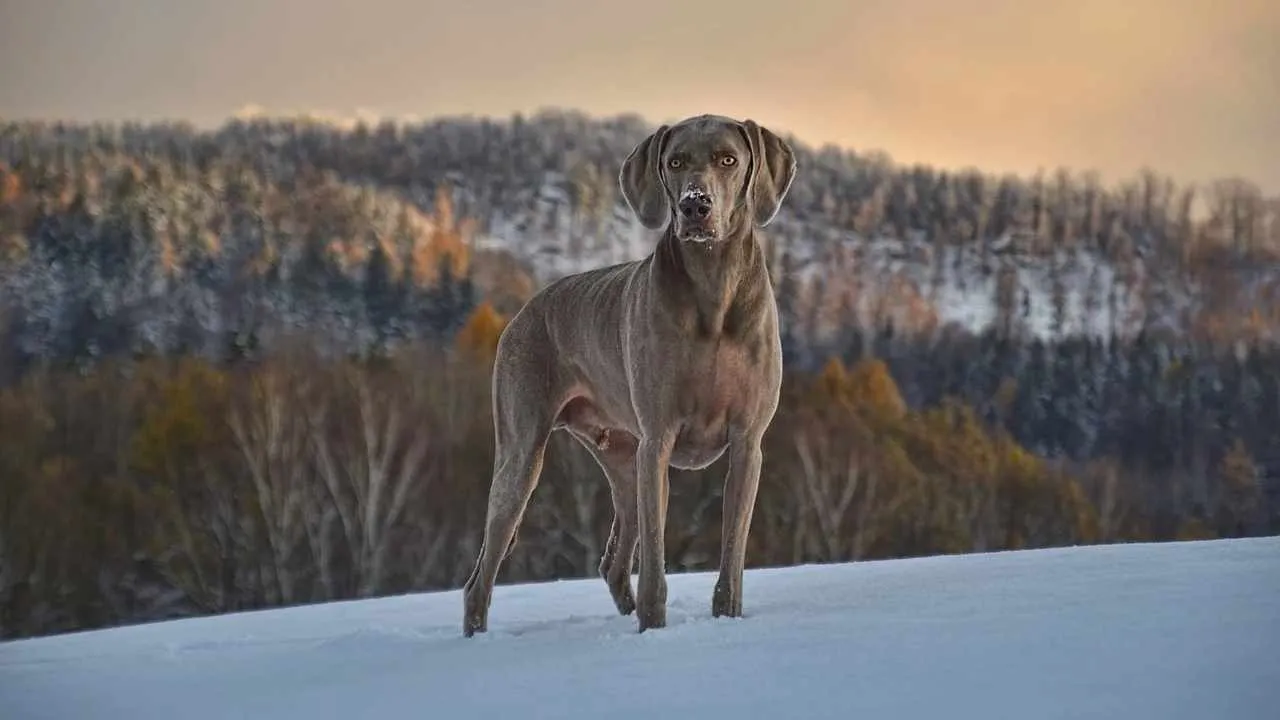
Ever met a dog so smart it can outthink you — and then use that intelligence to get into trouble?
That’s the Weimaraner for you.
Originally bred in Germany to hunt large animals like boars and deer, the Weimaraner is a mix of beauty, brains, and unstoppable energy. This breed thrives on constant activity, and when it doesn’t get enough, you’ll likely see negative behaviors like chewing furniture or digging up the yard.
These dogs form strong bonds with their owners and dislike being left alone — making them prone to separation anxiety. Their strong prey drive makes them chase smaller pets or wildlife, and their sharp intelligence means they quickly learn — both good and bad habits.
To keep them balanced, consistent training and mental stimulation are key. A bored Weimaraner can turn mischievous in no time, so keeping them active isn’t just fun — it’s necessary.
Fun Fact:
The Weimaraner is nicknamed the “Gray Ghost” for its sleek silver coat and stealthy movement, often appearing to glide silently through the woods.
8. Bulldog
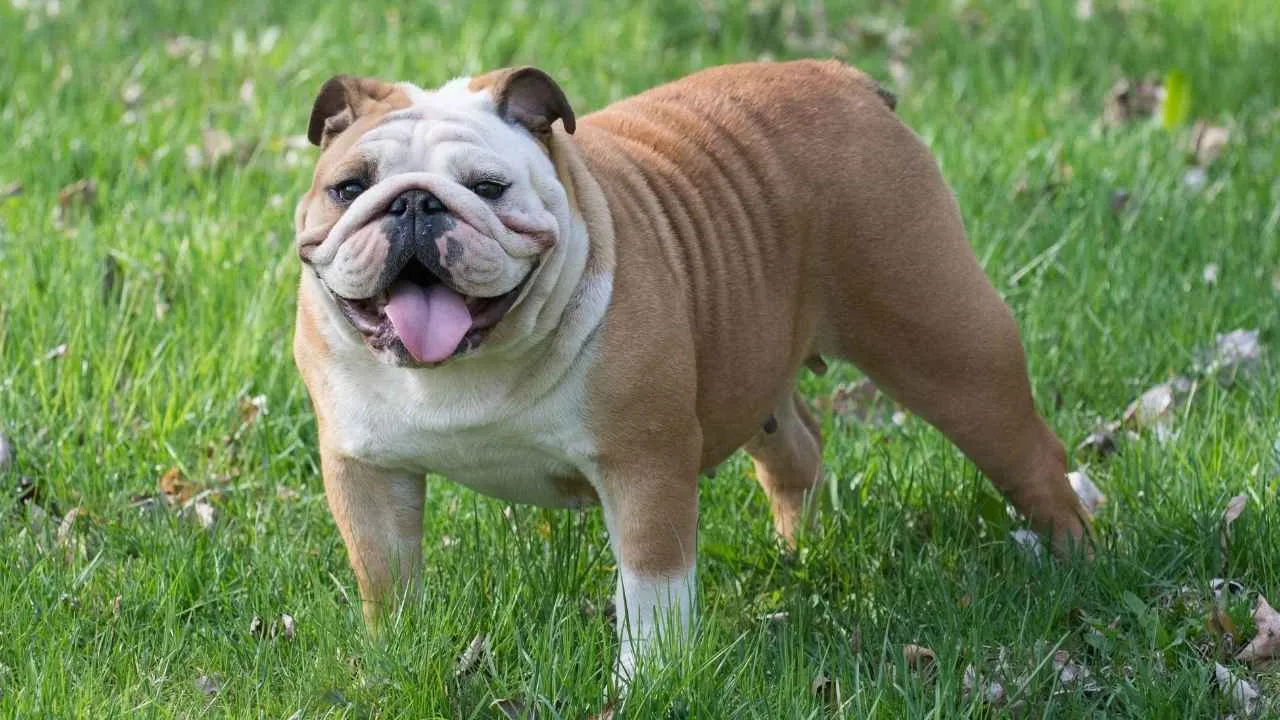
If determination had a face, it would look exactly like a Bulldog—broad, wrinkled, and adorably stubborn.
The Bulldog may be small in size, but it carries the heart of a fighter. Originally bred for bull-baiting, this breed still holds that tough streak in its personality. They are loyal and deeply protective of their owners, but they also have a lack of interest when it comes to following commands.
Their calm nature hides a surprisingly determined spirit that needs patience and positive reinforcement during training. While they may show mild aggression if provoked, Bulldogs are generally affectionate and love being close to family.
They thrive under gentle care and consistent guidance. Their laziness can make them seem disobedient—but in truth, they just prefer to take life one nap at a time.
Fun Fact:
Despite their tough appearance, Bulldogs are known to snore loudly and often dream while sleeping—some even “run” in their sleep chasing imaginary balls!
9. Jack Russell Terrier
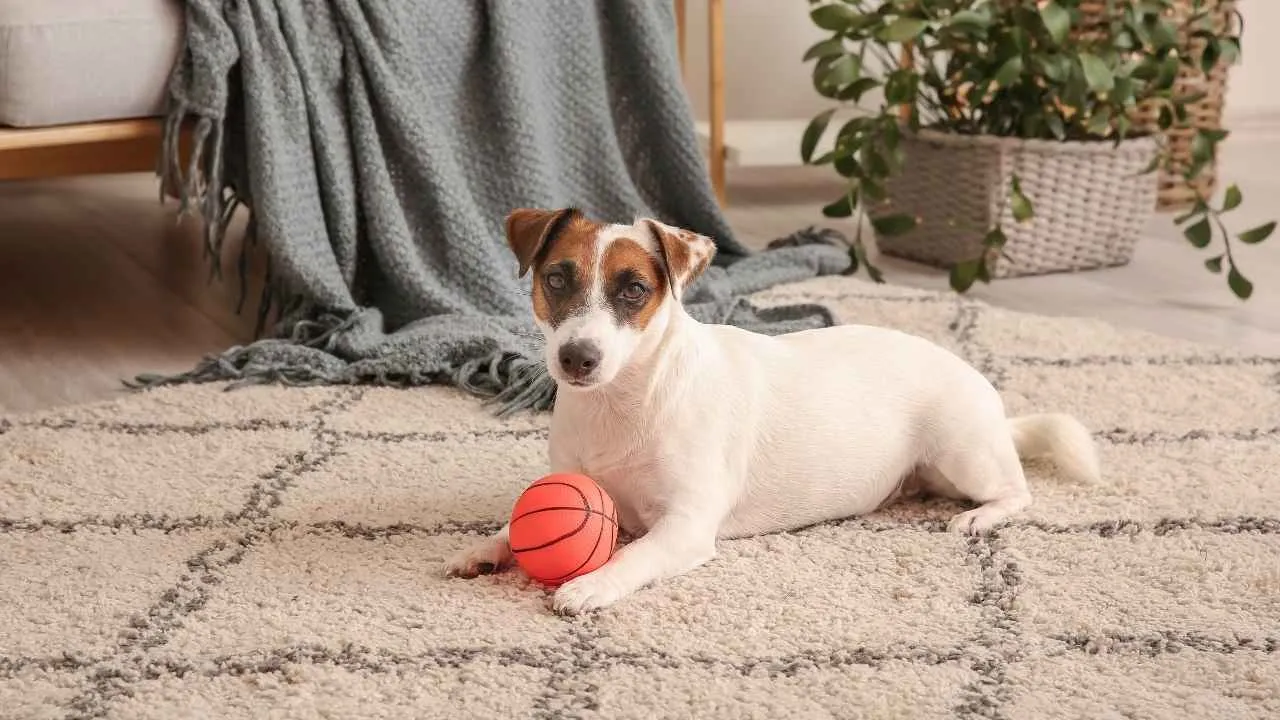
If dogs ran on batteries, the Jack Russell Terrier would never run out of charge — it’s like living with a furry bolt of lightning!
Known for its boundless energy and fearless nature, the Jack Russell Terrier is the definition of “small but mighty.” This breed was developed for fox hunting, giving it an unstoppable desire to chase and dig.
This intelligent yet fiery pup thrives best with owners who can keep up with its busy personality and love of adventure. Without proper outlets for all that enthusiasm, their behavior can quickly spiral into mischief — from tearing up toys to barking at every sound.
These dogs love people, but they also love control — and that means training must start early to manage their impulsive bark and high prey drive toward smaller animals. A bored Jack Russell can outsmart even the most experienced person, proving that brains without guidance can be a handful.
Without proper supervision or secure enclosures, these dogs can turn a backyard into a playground of chaos.
Fun Fact:
A Jack Russell Terrier once became a movie star — “Moose,” the dog who played Eddie on the TV show Frasier, was so popular that fans wrote him letters and sent fan mail!
Conclusion
At the end of the day, every so-called “bad dog” is really just a misunderstood one.
Each of these breeds, from the fiery Jack Russell to the stubborn Bulldog, has its own unique spark — a mix of instincts, intelligence, and emotion that needs patient training and understanding.
Owners who offer time, structure, and gentle care can turn even the most chaotic behavior into a bond built on love and trust.
Remember — dogs don’t act out because they want to be difficult; they do it because they want to communicate, explore, and be part of your life.
With patience, guidance, and consistency, these once “least well-behaved” pups can become some of the most loyal family companions you’ll ever know.
So, before you judge a tail that won’t stop wagging or a bark that won’t quiet down — take a breath, smile, and remember: behind every bit of mischief lies a heart that just wants to belong.


